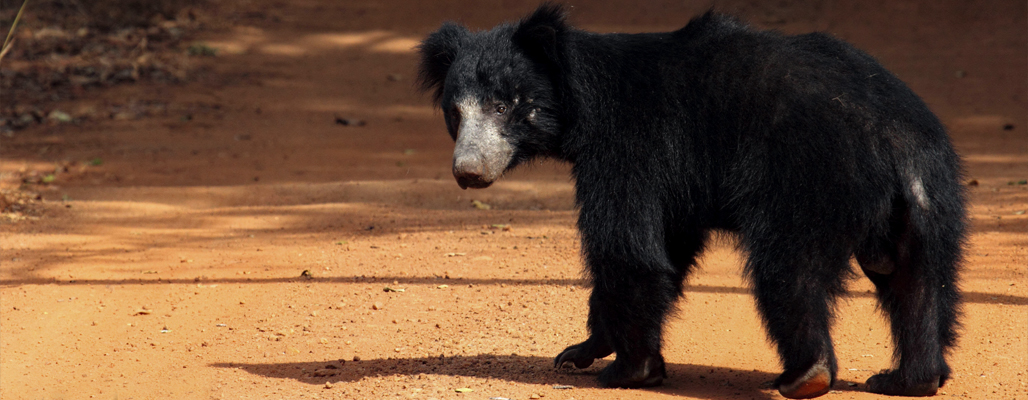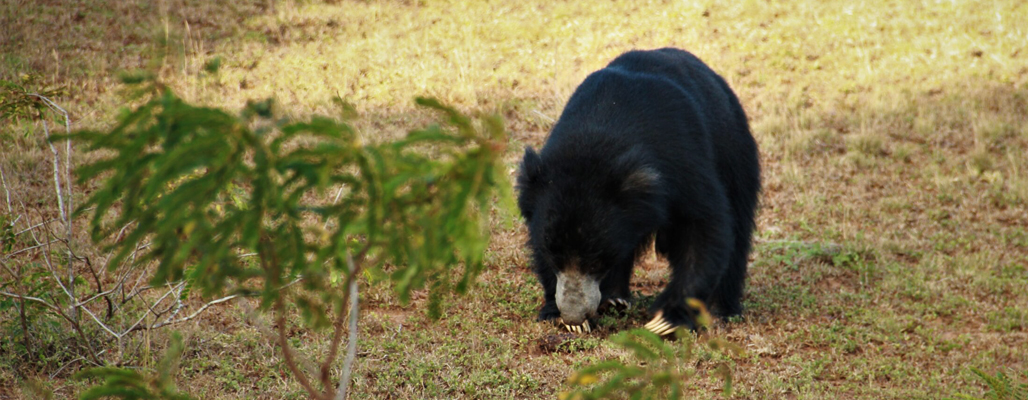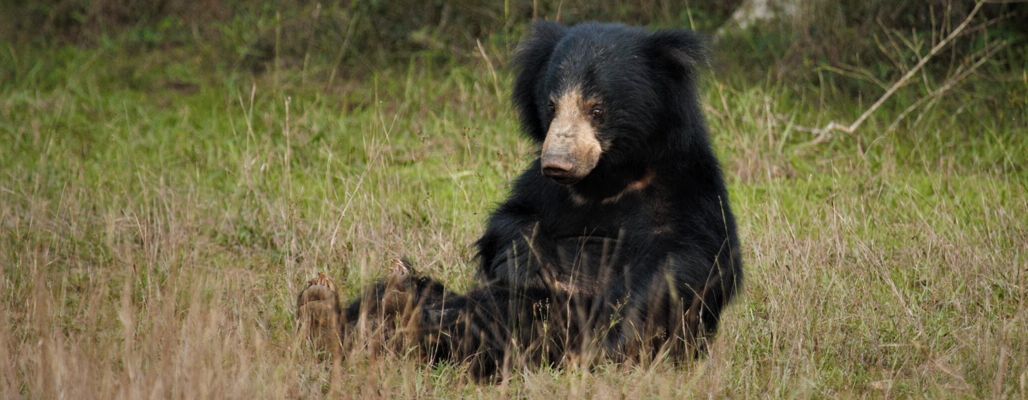





Previous
Next
The Sri Lankan sloth bear Melursus ursinus inornatus, (Show & Nodder, 1791) is Sri Lankas only surviving native Ursidae and is currently classified as Locally Endangered (MOE) and Globally Vulnerable (IUCN). Previously wide spread across the Dry and Arid Zone of Sri Lanka, the sloth bear is now particularly confined to the low land dry zone.
Historically, it was distributed in suitable forested country over the Northern, North Central and Eastern Provinces as well as in the eastern areas of the southern province, from Hambantota district eastwards. Thought to be limited to the southeast and northern part of Sri Lanka, that too in protected areas. There are recent anecdotal reports of the Sloth Bear from uncleared areas of war torn northern Sri Lanka. With no formally documented record of the population estimates of the Sloth Bear in Sri Lanka, the inferred populations by anonymous reporters estimate it to be less than 200 individuals remaining.
The decline of the Sloth Bear has been attributed partially to habitat loss, in particular loss of forested areas, and partially to hunting, especially during the colonial era for its pelt and other ornamentation, and currently by persecution due to its aggressive responses when defending its young, or when surprised in the jungles.
During the colonial era, the development of Sportsmen’s Reserves in Sri Lanka increased the rate of decline.
The current threats are perceived to be mainly habitat loss and human persecution, and accidental entanglement in snares set for other species of animals, especially wild boar.
RESEARCH AIMS AND OBJECTIVES
Goal
To map, evaluate the population density and composition of sloth bears in Willpattu National Park and to identify their habitat needs and preferences. The information/knowledge gained through this study can then be applied island wide in the subsequent conservation strategies and efforts for the sloth bear.
Objectives Goal
The following objectives have been established for the present research study :
- To evaluate the population densities in Wilpattu National Park in different types of habitats
- To identify their specific habitat needs and preferences
- To collect scat sample to analyze their seasonal diet and possible DNA analysis
